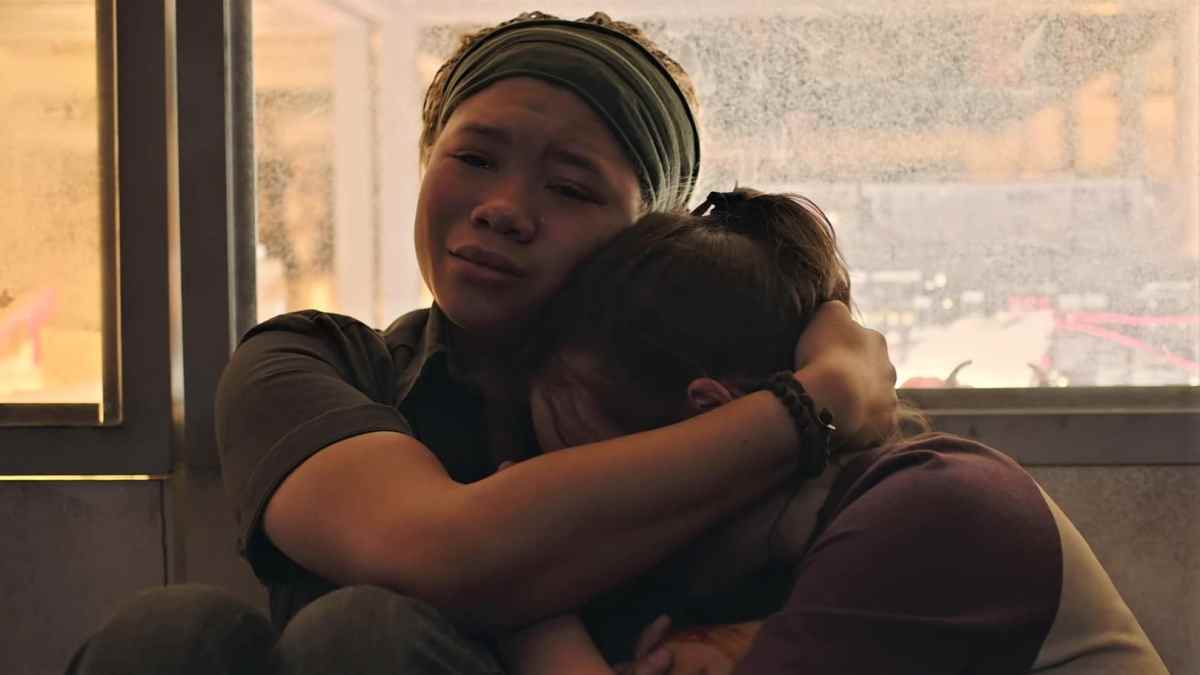Episode 7 of The Last of Us HBO takes audiences back in time to a flashback of Ellie’s (Bella Ramsey) life growing up in a Boston Quarantine Zone. The story focuses primarily on the relationship she has developed with her best friend and crush Riley (Storm Reid), following the two as they sneak out of the FEDRA base camp to explore all the wonders of their local Mall – in a date Riley planned for the two of them after revealing she has left to join the Fireflies.
This episode also cuts back and forth between these flashbacks and the current situation Ellie is navigating with Joel (Pedro Pascal), as she fights frantically to save him from the wound he obtained in Episode 6. There are some beautiful mirroring moments that take place in her story with Riley and her relationship with Joel, and this is the first extensive glimpse into Ellie’s motivations and backstory as a character in the adaptation.
In this recap of HBO’s The Last of Us Podcast Episode 7, we’ll discuss the key themes of sexuality and adolescence explored, as well as this episode’s more emotional and impactful moments as discussed by Showrunners Craig Mazin (Chernobyl), Neil Druckmann (Creative Director on The Last of Us Part I & II), and host of the podcast Troy Baker (Joel’s original voice and motion capture actor on The Last of Us Part I & II), as well as compare and contrast the HBO adaptation to the base games.
HBO’s The Last of Us Podcast – Episode 7 Recap – ‘Left Behind’
- Origins of The Last of Us’ standalone DLC – The Last of Us: Left Behind
- The music in Episode 7
- Presenting FEDRA in a new light
- Ellie’s connection to her personal belongings
- Exploring Ellie’s relationship with Joel
- Exploring sexuality and Ellie’s relationship to Riley
- Bringing the Mall to life through visual effects
- Additional analysis and notable quotes
Origins of The Last of Us’ standalone DLC – The Last of Us: Left Behind
Neil Druckmann said that in 2013, when The Last of Us video game launched, expansion content and standalone comic books were becoming more popular and were often used by game developers as a way to further promote and market their projects. He mentioned that he adopted a less cynical approach to this concept, saying that a DLC which placed Ellie at the centre of the story was a great ‘storytelling opportunity’ for the developers at Naughty Dog.
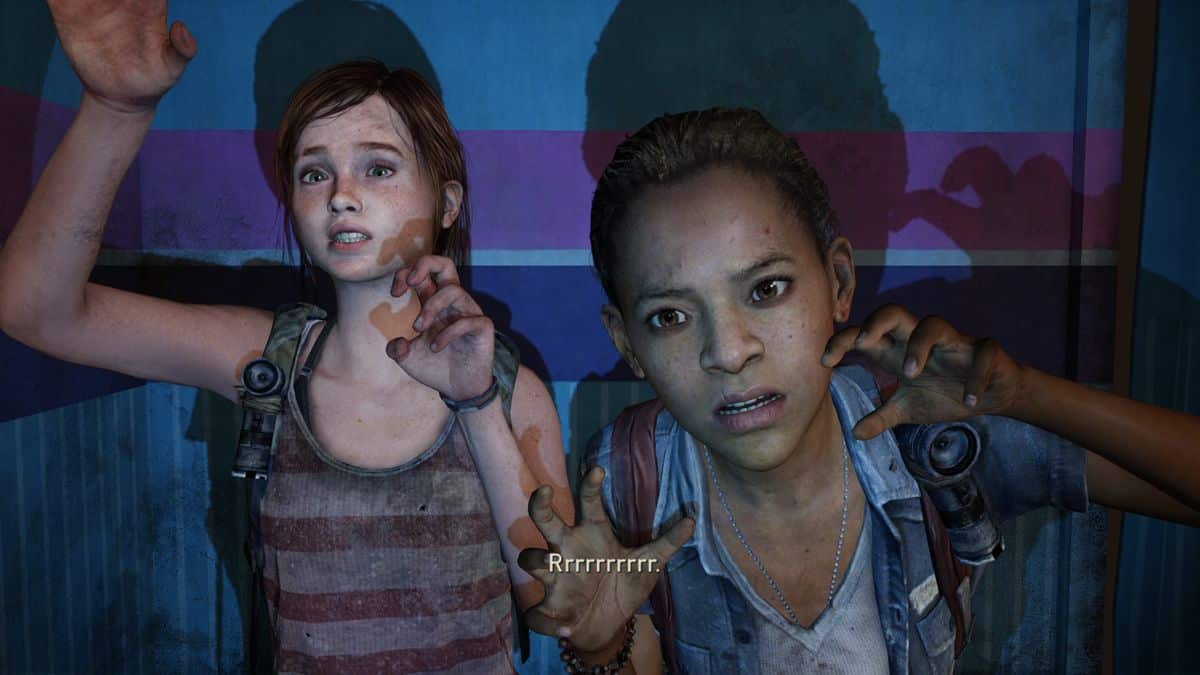
Riley’s character was first conceived alongside Faith Erin Hicks (Writer and Artist) when they were working on The Last of Us: American Dreams – a Dark Horse comic book adaptation published shortly before the DLC launched. Once this character was fleshed out, and Ellie and Riley’s first encounter was established, these themes fed into the standalone expansion quite organically.
Druckmann noted that The Last of Us: Left Behind subverted mechanics often used for violence in the base game, to instead be utilised in ways that could connect Ellie with Riley. He brought up the example of the photo booth sequence, saying these were interactive moments that granted player agency, while also connecting the player back to the relationship the pair had with each other.
Druckmann said that at the time, gameplay like this was a ‘huge investment’, as Naughty Dog was historically known for more dynamic set pieces presented in the Uncharted franchise. He stated it was ‘almost unheard of’ to invest the number of resources the team did on more intimate character moments, but that ultimately these scenes were equally as impactful and went on to influence the way the studio approached making games after its development.
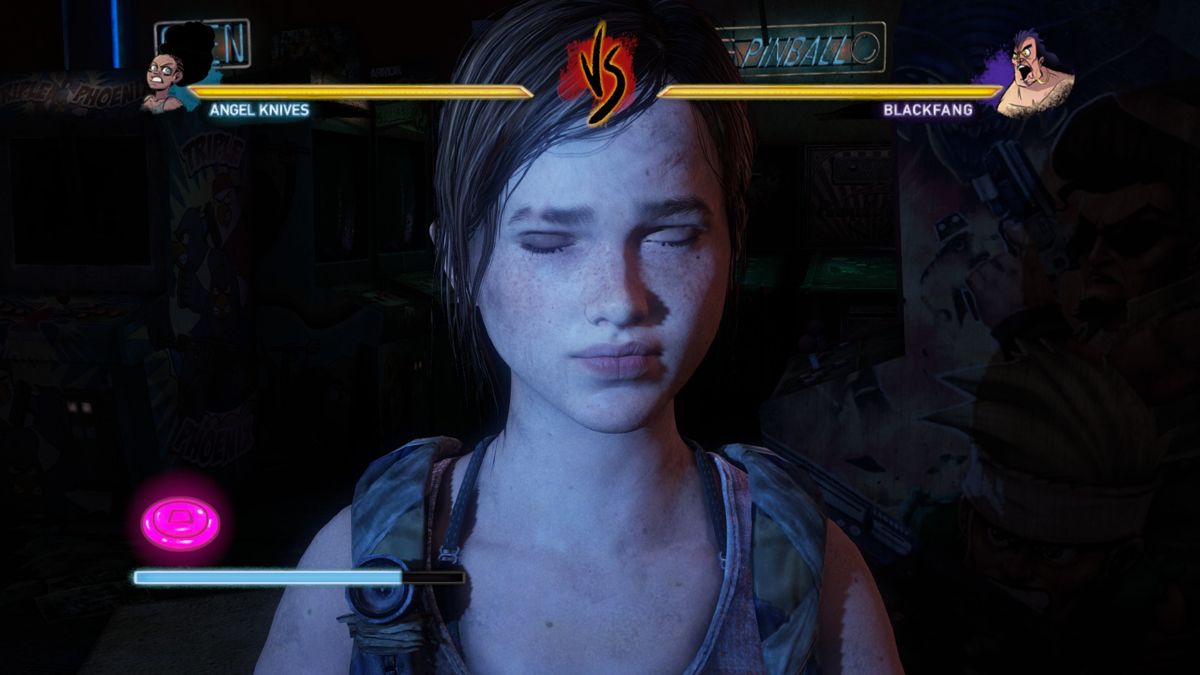
He also spoke to the original arcade machine Ellie and Riley encounter at Raja’s Arcade in The Last of Us: Left Behind, as in the video game. As the developers weren’t able to recreate a Mortal Kombat II machine – as shown in the HBO adaptation – due to licensing, the team had to create a fictional game called The Turning. This was a nod to a comic book he had been working on whilst developing the first two Uncharted titles, which eventually led to the creation of The Last of Us.
The music in Episode 7
Druckmann has mentioned he is a huge fan of the band Pearl Jam, and their song ‘All or None’ has historically been an ‘escape’ for him. The song makes an appearance in Episode 7 during a flashback to Ellie (Bella Ramsey) in the Boston Quarantine Zone, as she is listening to it on her Walkman whilst running laps in the several weeks since Riley (Storm Reid) has abandoned the FEDRA base.
He noted that it captured the feeling of hopelessness Ellie was feeling at the time whilst having to come to terms with Riley leaving her, while also echoing Ellie’s attitude as a person, stating that she is very much an ‘everything or nothing’ kind of person.
The team also mentioned the ‘calliope’ rendition of ‘Just Like Heaven’ by The Cure, which played during the merry-go-round scene in Episode 7 during Ellie and Riley’s Mall date. Mazin accredited this song choice to Timothy Good (Editor of The Last of Us HBO), saying he had been waiting to use this version of the song in a project for quite some time.
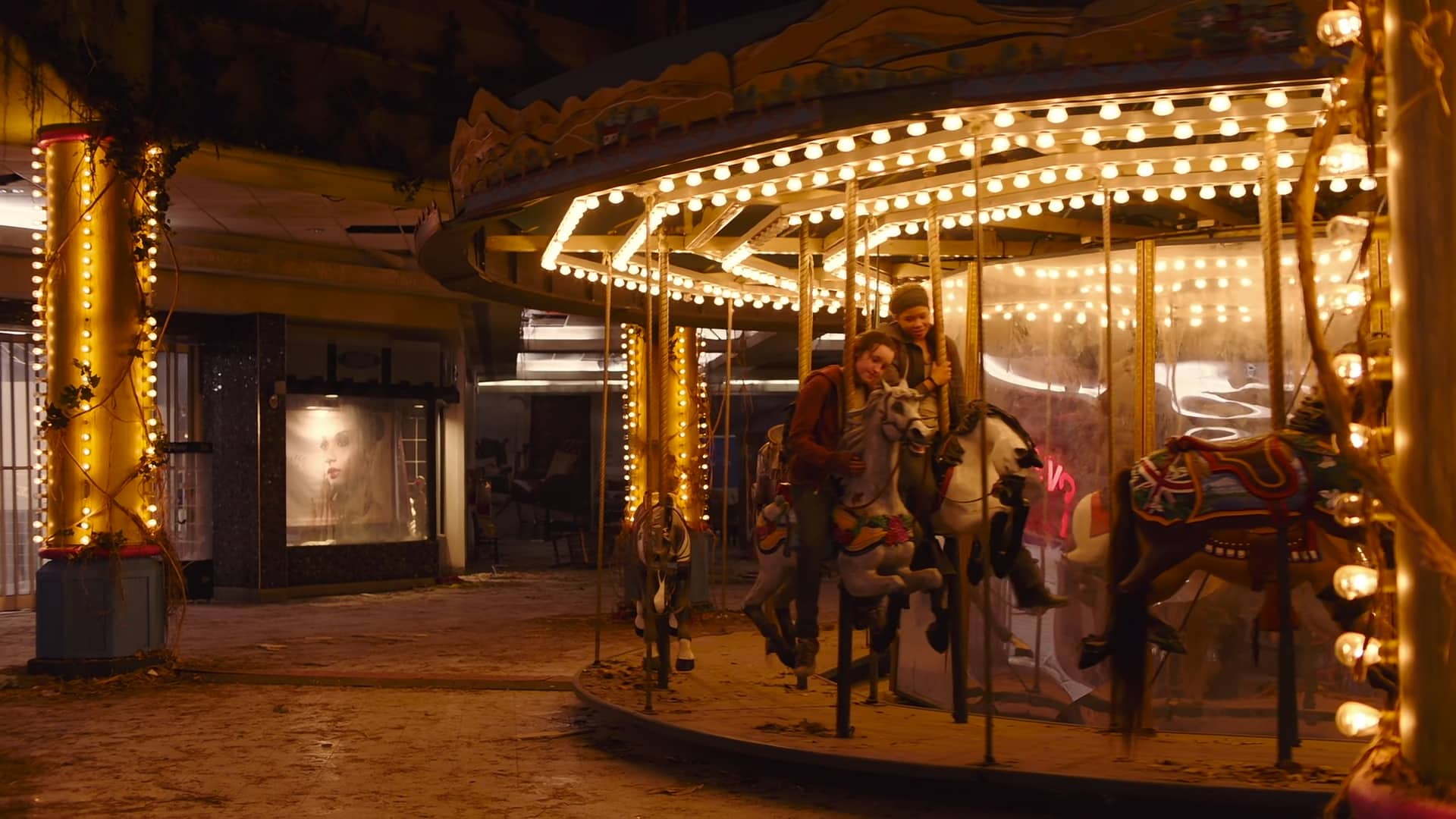
They also spoke to the inclusion of ‘I Got You Babe’ by Etta James, which plays during the scene where Ellie and Riley are dancing in a Halloween store and exchange a kiss. Druckmann said that when choosing this song – which was first presented in the video game version of The Last of Us: Left Behind – they wanted to find a tune that was about romance, but wasn’t overly sentimental in its presentation. This song struck a perfect balance, and brought a ‘funky’ vibe and energy which communicated its meaning in a less obvious way.
Mazin also mentioned that whilst songs like ‘Never Let Me Down Again’ by Depeche Mode, and ‘Long, Long Time’ by Linda Ronstadt have been impactful songs throughout the series, they always wanted to avoid using music that was too on the nose or commercially overplayed.
Mazin mentioned that since Episode 3 has aired, searches for ‘Never Let Me Down Again’ have skyrocketed, and that having wider audiences discover these songs alongside them was one of their ultimate goals.
Presenting FEDRA in a new light
The team also spoke to how they represented a different side of FEDRA in Episode 7, as in previous episodes audiences had only seen a ‘controlling’, ‘corrupt’, and ‘abusive’ face to this government body.
Mazin said that he and Druckmann had extensive discussions throughout production about never representing any faction as ‘purely good or purely bad’, and that this episode stood as an important opportunity to see a more functional side to them. He explained that this episode depicted how FEDRA is both maintaining some sort of stability within this world, and putting in the groundwork to raise a younger generation which will someday run operations beyond its current leaders.
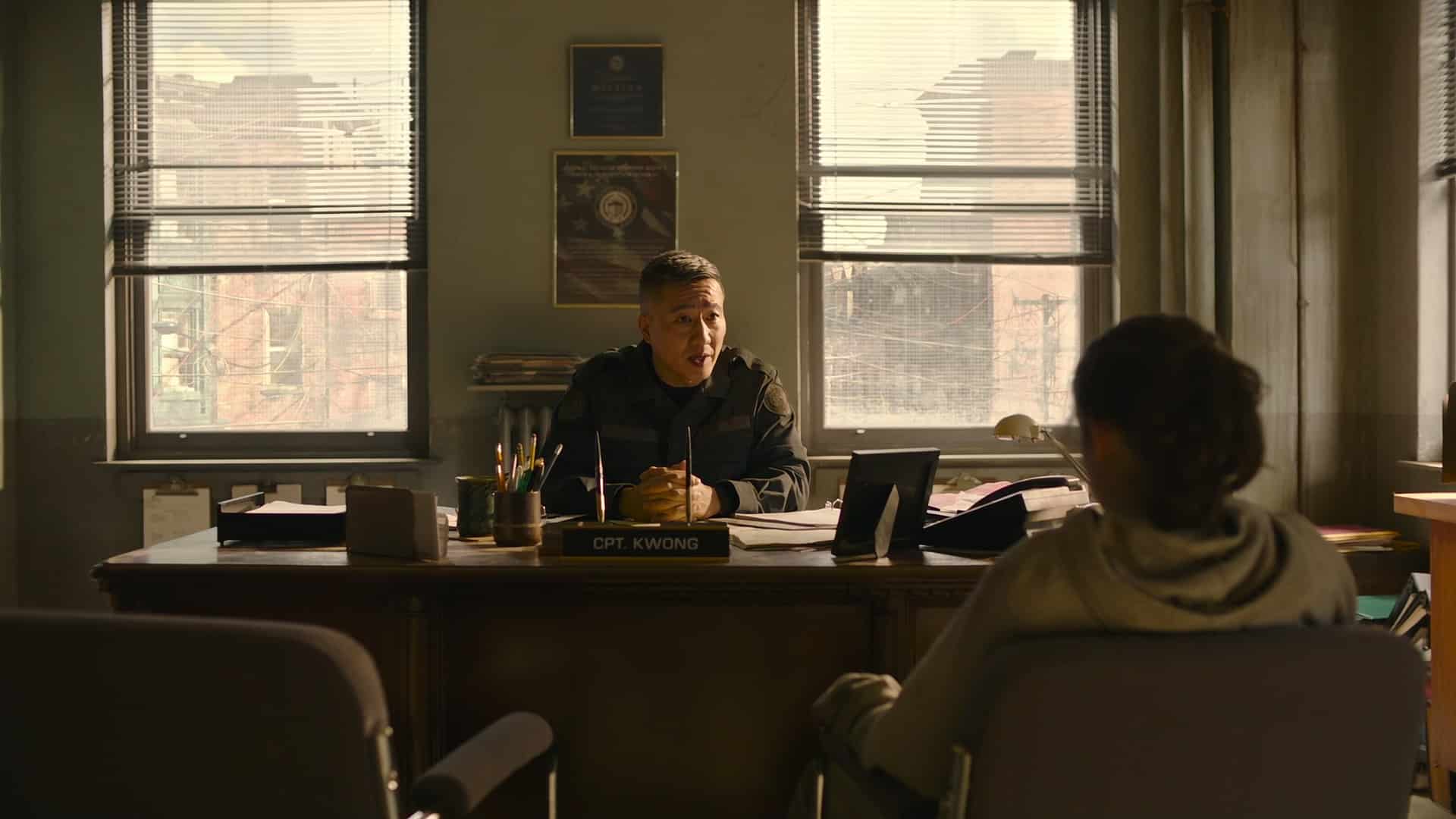
He also spoke to the scenes between Ellie and FEDRA agent Captain Kwong (Terry Chen), saying that Kowng truly believes Ellie has the strength of character to work her way up the ranks at FEDRA, potentially running operations throughout all of Boston in the future.
This also led to some interesting discussions around the teams’ own adolescence, as Druckmann referenced Ellie’s ‘allergy to authority’, relating back to some of his own experiences in high school. Mazin had the opposite experience, stating he was often referred to as an ‘overachiever’, and that he was drawn to Ellie’s character because she possesses qualities he wished he had adopted more of.
Ellie’s connection to her personal belongings
Ellie is an inherently sentimental and passionate character, and the team discussed the connection she had to her possessions within a world that is so deprived of resources.
They referenced the moment Ellie immediately asks for her Walkman back in Captain Kwong’s office, as well as her protective instincts when Joel steps on her switchblade during their first encounter, which Druckmann noted was ‘very primal’ in nature.
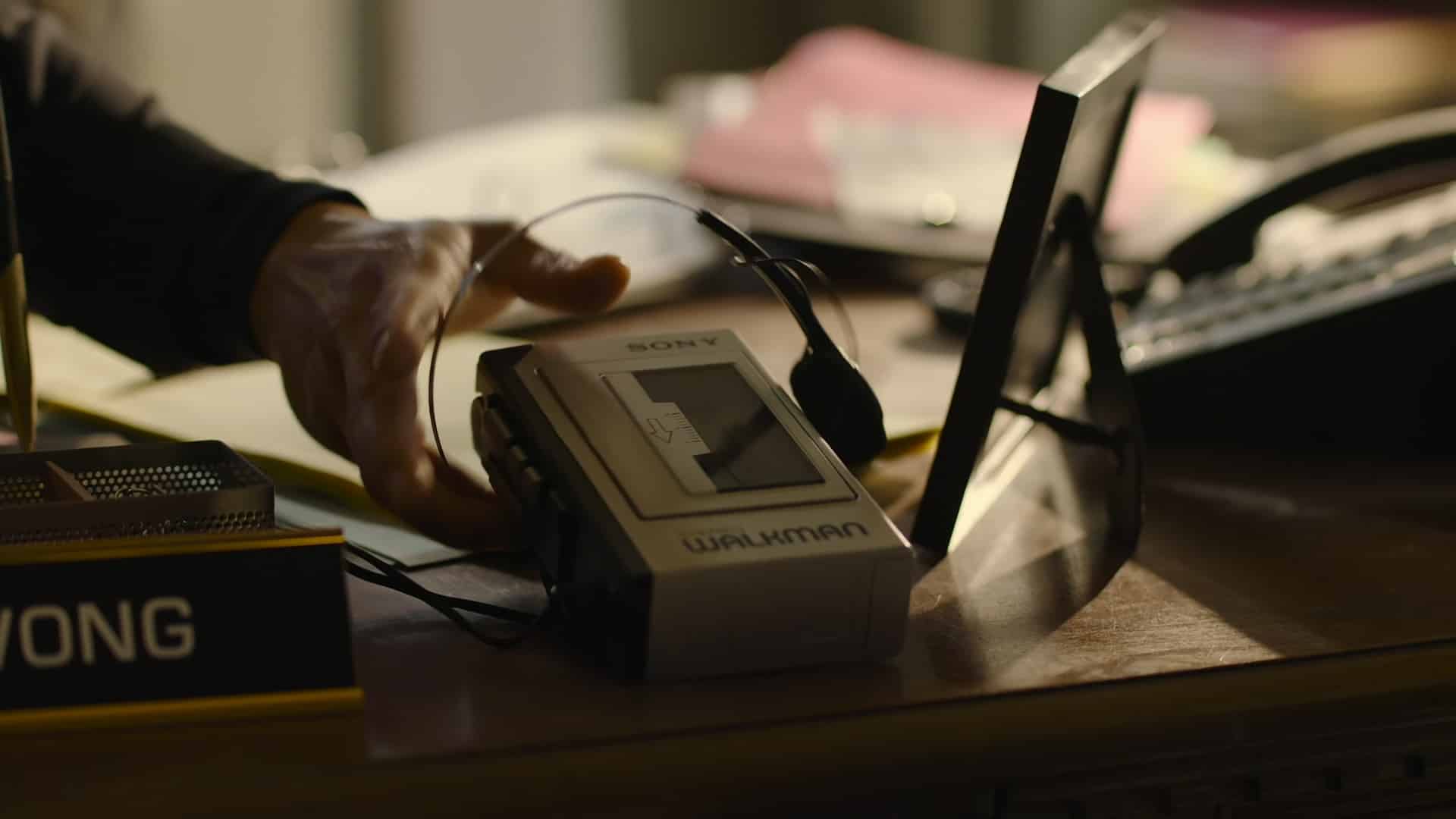
Mazin explained they had initially shot a scene, which was ultimately cut for time, in which Ellie is standing alone in a locker room surrounded by other teenagers who are having their own conversations. At this point Ellie only has Riley to lean on, as nobody else in the Quarantine Zone talks to her, and as her world is essentially very ‘solitary’, the items she has which provided comfort and grounding became more and more precious.
They also referenced the posters and objects scattered throughout her bedroom, as Mazin says these are the ‘sum totality of her entire world.’ Druckmann also added that as this world provides a scarcity of things for her to escape into, the threat of anyone taking that away from her is understandably very urgent in her mind.
Exploring Ellie’s relationship with Joel
Mazin explained that the structure of Episode 7 was initially going to focus solely on Ellie and Riley’s story arc, and that a key suggestion from the executives at HBO changed the course of the episode for the better.
He said that by shifting the episode to cut back and forth between flashbacks and the present day situation between Ellie and Joel, it made the narrative much more impactful, and made sense as this is also how the story was structured in The Last of Us: Left Behind.
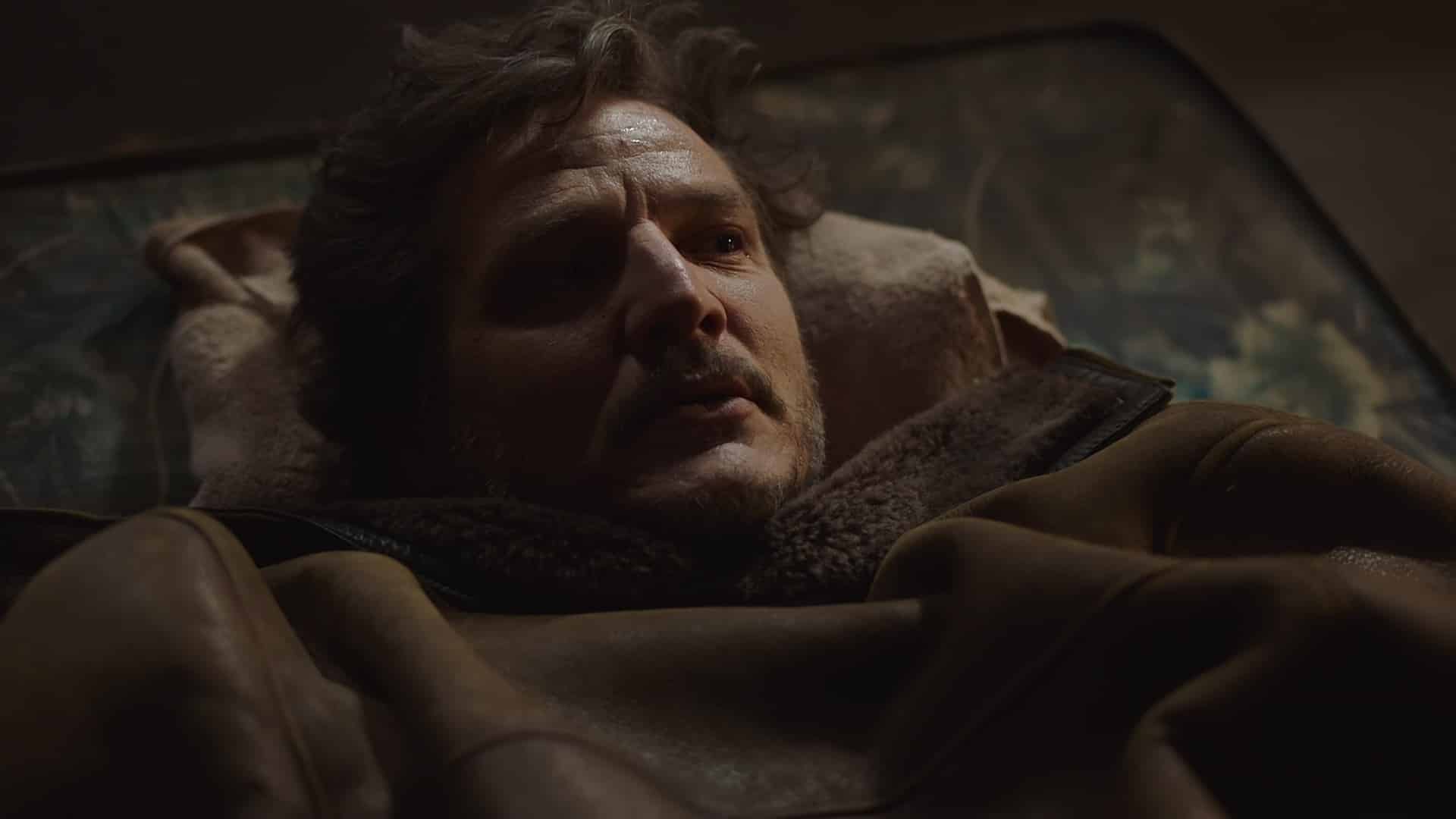
Mazin said the team had discussed the imagery of Joel essentially dying on the mattress in the episodes’ opening, saying that as he tells Ellie to leave it communicates the hopelessness of this moment. Ellie is aware that she may not be able to save him, and Joel sheds a single tear in this scene which the team interpreted in multiple ways. Mazin added that no matter how the tears are interpreted:
‘What matters is the depth of his connection to her. No matter how you slice any of the interpretations… all of them come back to the same thing. There is this remarkable depth of connection between the two of them.’
This moment beautifully relates back to the conclusion of Episode 7, as Ellie has already been instilled with the idea of never giving up due to her experience with Riley – a lesson Mazin says she feels ‘in her bones.’ Because of this, Ellie is determined to try and save Joel to his dying end, no matter how limited their existing time together may be. Mazin added:
‘The fact that it must end is not a reason for us to not love.’
Exploring sexuality and Ellie’s relationship to Riley
The team also discussed the relationship presented between Ellie and Riley, as this episode explores the romantic feelings that are ever present throughout adolescence within the confines of a post-apocalyptic setting.
Druckmann noted that The Last of Us: Left Behind essentially focuses on the ‘post-apocalyptic version’ of skipping school with a friend and crush, and that the Mall was as true a setting for that exploration in the ‘old world’ as it was in this one.
Mazin mentioned that the Director of Episode 7, Liza Johnson, was an integral part to making Ramsey and Reid feel safe during these scenes, and that as the two are relatively close in age to the characters they portray, their performances felt very authentic and ‘true’ to the narrative.
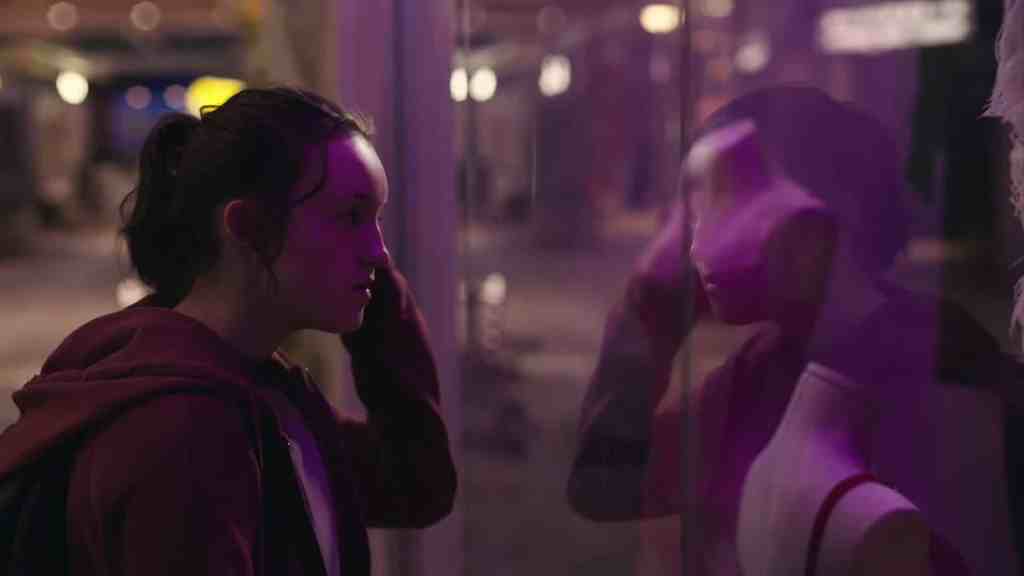
Mazin added that whilst these times in adolescence are often some of the most confusing, they’re some of the best at the same time, because they represent moments where you first start living and feel strong emotions that aren’t quite yet understood.
Druckmann added that Ellie aspires to be equal to the people she admires. Mazin said that as Riley is slightly older and taller than Ellie, she found herself feeling proud of the times she had entered and won altercations with other teenagers at FEDRA without her assistance. It proved something within her and put her on the same level as Riley intellectually, as these are actions Riley would often succeed in.
Mazin also discussed the ‘confusing’ and ‘uncomfortable’ feelings the pair had surrounding their sexualities. He explained that as the outbreak took place in 2003, it wasn’t reflective of the cultural ‘revolution’ much of society has experienced today, and that the two would have grown up surrounded by ways of thinking that were essentially stuck in this era.
Because of this, the two don’t inherently know how to talk about their feelings for one another, and Riley takes opportunities to ‘poke’ Ellie to communicate her own attraction to her when they land at an abandoned Victoria’s Secret. This leads Ellie to feel more defensive and vulnerable about her own attraction, and she takes a moment to fix her hair in the window’s reflection.
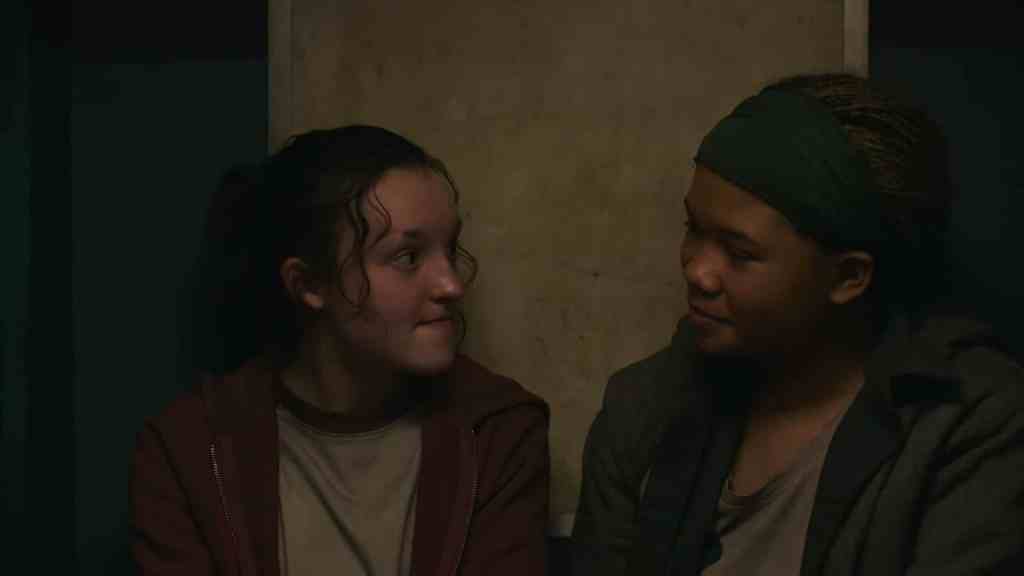
They also referenced the moments in the photo booth and on the escalator where Ellie pushes Riley away after lingering near her for a slightly longer moment. Mazin said that these were scenes where Ellie is excited and terrified of engaging in physical contact with Riley, and that when it happens she feels the need to put a stop to it out of fear she won’t be able to hide her feelings for Riley.
He added that there are added layers of fear present, which were validated through the conversations he had with gay women in his own life. Particularly for adolescent queer women in the early noughties, this time reflected a mentality where any public displays of affection with someone of the same sex could lead to harmful rumours, possible instigations of violence, and complete loss of friend groups or romantic interests. He said:
‘That’s, I think, a real fear that Ellie has. That it won’t merely be a rejection of romance, it will be a total rejection of her as a person and as a friend, and she can’t bear that.’
Bringing the Mall to life through visual effects
The team discussed the challenges they had in bringing the iconic Mall from The Last of Us: Left Behind, and The Last of Us: American Dreams to life on-screen.
Mazin explained that the team had fortunately found a Mall in Calgary which was scheduled for demolition, and they were effectively told they could destroy and use the space however they wanted. The only issue was that the Mall itself was very dreary and run down, and as it was also a one story building it didn’t bring feelings of wonderment to their minds in the way it needed to be communicated in the story.
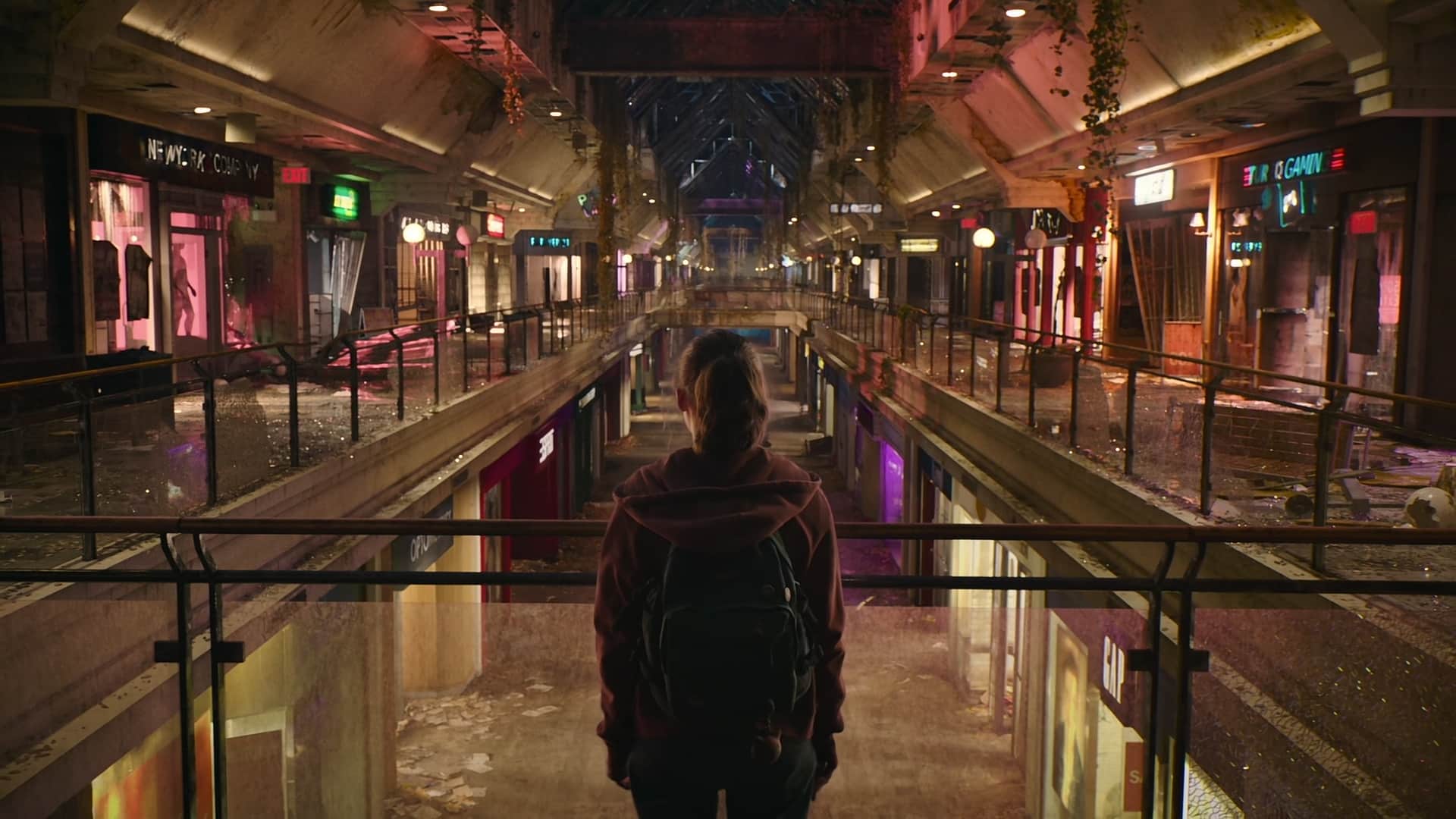
They explained that the majority of these sequences were attributed to visual effects, commending the work of VFX Supervisor Alex Wong. Mazin said that the first shot of Ellie looking at the Mall light up was filmed on a soundstage, as the top of the escalator led to a plain wall due to there being no second floor.
He noted that the visual effects team pulled off ‘absolute fucking magic’ in bringing these scenes together, adding that the love the crew had for the game was a sole reason for them working so effortlessly to not compromise the integrity of the episode.
Mazin also spoke to the inclusion of the Mortal Kombat II arcade machine in Raja’s Arcade, saying he became very ‘granular’ and obsessive about sound mixing. He mentioned this is something he holds in very high regard with the projects he works on, noting that the sound of the first quarter being dropped into the machine was something he wanted to be communicated perfectly, as this expressed the initial excitement an arcade goer would feel.
Druckmann also spoke to the culture surrounding Mortal Kombat II when it was released and first became popular in the arcade scene, noting that a number of political discussions took place which revolved around the censoring of video games.
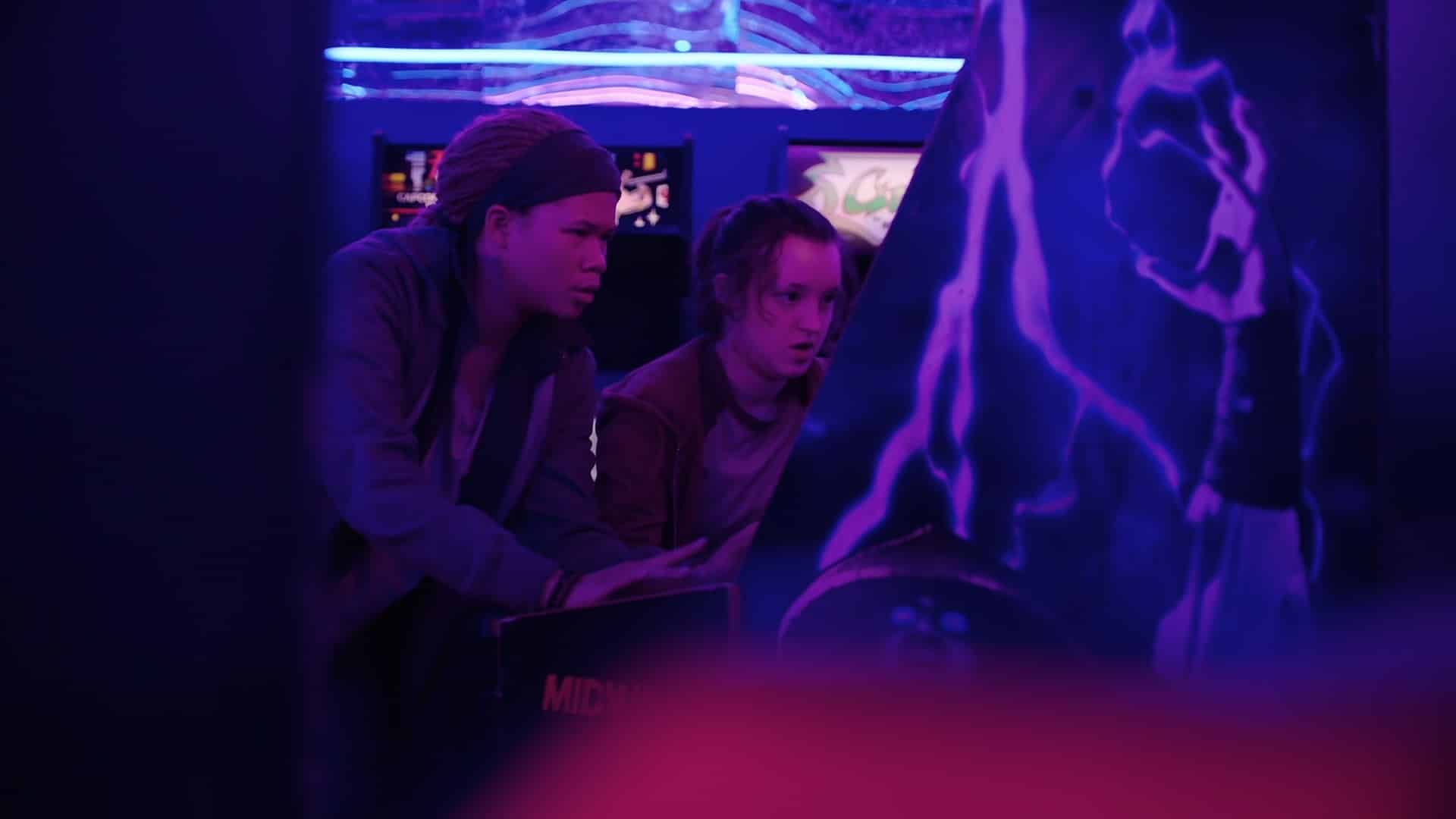
He also mentioned that the only way arcade patrons would know about cheat codes and fatalities in the game was through word of mouth, which raised as to how Ellie and Riley knew these combos in the series.
He said that as the two have collected totems from the old world throughout the story – with Ellie hanging up a Mortal Kombat II poster in her own bedroom – it’s very plausible that they would have collected and stumbled upon video game magazines to brush up on their own knowledge.
Additional analysis and notable quotes
- Craig Mazin – ‘What matters is the depth of [Joel’s] connection to [Ellie]. No matter how you slice any of the interpretations…, all of them come back to the same thing. There is this remarkable depth of connection between the two of them.’
- Neil Druckmann – ‘[Ellie] has such an allergy to authority.’
- Craig Mazin – (Referencing Ellie’s possessions) ‘When your world gets that solitary, it does come down to these things that give you comfort and help you ground yourself.’
- Craig Mazin – ‘It’s the love of the game that brought all these visual effects artists to the show, and it’s the love of the game that kept them working… for iteration after iteration to make it great.’
- Neil Druckmann – ‘We know Ellie just has an appreciation for beauty and for the old world.’
- Craig Mazin – ‘The people who love her want to show her things… because she appreciates them. She’s not a romantic, but she’s a passionate person about the world around her.’
- Craig Mazin – ‘The fact that it must end is not a reason for us to not love.’
For further analysis and reading on the HBO adaptation of The Last of Us, you can check out the following articles:
- A spoiler-free review of the entire first season of The Last of Us HBO TV series
- The Last of Us HBO TV series: Cast and Character Guide
- The Last of Us interview: Henry and Perry actors examine their work
- The Last of Us interview – Storm Reid on portraying Riley
Episode recaps and analysis:
- The Last of Us – Episode 1 Recap – ‘When You’re Lost in the Darkness’
- The Last of Us – Episode 2 Recap – ‘Infected’
- The Last of Us – Episode 3 Recap – ‘Long, Long Time’
- The Last of Us – Episode 4 Recap – ‘Please Hold to My Hand’
- The Last of Us – Episode 5 Recap – ‘Endure and Survive’
- The Last of Us – Episode 6 Recap – ‘Kin’
- The Last of Us – Episode 7 Recap – ‘Left Behind’
- The Last of Us – Episode 8 Recap – ‘When We Are in Need’
- The Last of Us – Episode 9 Finale Recap – ‘Look for the Light’
Behind-the-scenes podcast recaps:
- The Last of Us Podcast – Behind the Scenes of Episode 1 – ‘When You’re Lost in the Darkness’
- The Last of Us Podcast – Behind the Scenes of Episode 2 – ‘Infected’
- The Last of Us Podcast – Behind the Scenes of Episode 3 – ‘Long, Long Time’
- The Last of Us Podcast – Behind the Scenes of Episode 4 – ‘Please Hold to My Hand’
- The Last of Us Podcast – Behind the Scenes of Episode 5 – ‘Endure and Survive’
- The Last of Us Podcast – Behind the Scenes of Episode 6 – ‘Kin’
- The Last of Us Podcast – Behind the Scenes of Episode 7 – ‘Left Behind’
- The Last of Us Podcast – Behind the Scenes of Episode 8 – ‘When We Are In Need’
- The Last of Us Podcast – Behind the Scenes of Episode 9 – ‘Look for the Light’
The Last of Us is now streaming on HBO Max in the US, and Binge in Australia.
